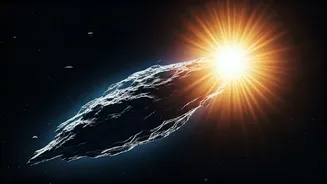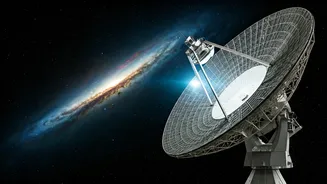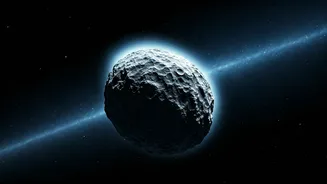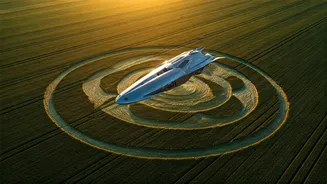A Cosmic Enigma
Comet 3I/ATLAS has once again captured the attention of astronomers and the public alike. Following its unlikely survival after a close brush with the sun,
the debate has intensified over its origins. The prevailing question is whether it is a natural phenomenon or a product of something more, specifically if it could have been artificially constructed. This comet’s unexpected resilience has added further fuel to the ongoing discussion of whether it might harbor signs of an intelligent origin, adding complexity to what has already proven to be a perplexing astronomical case. The mystery surrounding 3I/ATAS continues to evolve.
Survival Against Odds
The remarkable survival of Comet 3I/ATLAS after its journey around the sun is a key element of the current speculation. Astronomers had anticipated the comet's disintegration due to the intense solar radiation and gravitational forces it encountered. However, it emerged intact, defying expectations and providing a unique event for observation and study. The mere fact that the comet survived this perilous passage has intensified intrigue. The comet's unexpected endurance prompts a reconsideration of the natural processes at play, as scientists delve deeper into understanding the forces that shaped its trajectory and how it endured.
The Loeb Hypothesis
Harvard scientist Avi Loeb has emerged as a central figure in the debate, steadfastly suggesting that Comet 3I/ATLAS could be artificial. His viewpoint draws attention to the many mysteries that remain unsolved concerning the comet's properties and behavior. Loeb emphasizes his belief that all the available data and information can’t be explained through the framework of known natural phenomena. He proposes that it could be a spacecraft or a probe, perhaps sent from an advanced extraterrestrial civilization. The persistent nature of his hypothesis continues to drive discussion and encourage new investigations to further analyze all available evidence.
The Energy Puzzle
One of the central arguments raised by those exploring the artificial origin of Comet 3I/ATLAS revolves around the energy equation. Proponents of the theory assert that observed characteristics and behaviors of the comet can’t be adequately explained via existing models without incorporating artificial technologies. The exact analysis of the comet’s interactions with solar radiation, and its structural stability, presents certain discrepancies. Critics contend that all the data points can be satisfactorily explained by accepted models of cometary formation and behavior. This continuing disagreement highlights a central point of contention, influencing the ongoing debate.
Skeptical Perspectives
Despite the intriguing nature of the hypothesis of extraterrestrial activity, many astronomers remain skeptical. They maintain a belief that all of the observed behaviors of Comet 3I/ATLAS can be reasonably explained using existing scientific models and natural phenomena. Many scientists advocate that extraordinary claims demand extraordinary evidence, and they argue that no conclusive proof of artificiality has yet been found. Skeptics point to the lack of definitive evidence that could prove that the comet's properties are beyond the scope of known natural phenomena. They call for more thorough and rigorous investigation before any radical conclusions are reached.
A Breakthrough Signal?
In an intriguing development, a radio signal was detected which may have come from Comet 3I/ATLAS. The signal's discovery spurred fresh interest and raised more questions about the comet's characteristics. Proponents of the artificial hypothesis are considering the possibility that this signal might be a form of communication or technology within the comet. However, further research is needed to determine the nature of the radio signal and ascertain whether it is related to the comet's properties or unrelated. This discovery adds a new dimension to the mystery surrounding Comet 3I/ATLAS, with scientists closely examining it for more understanding.












